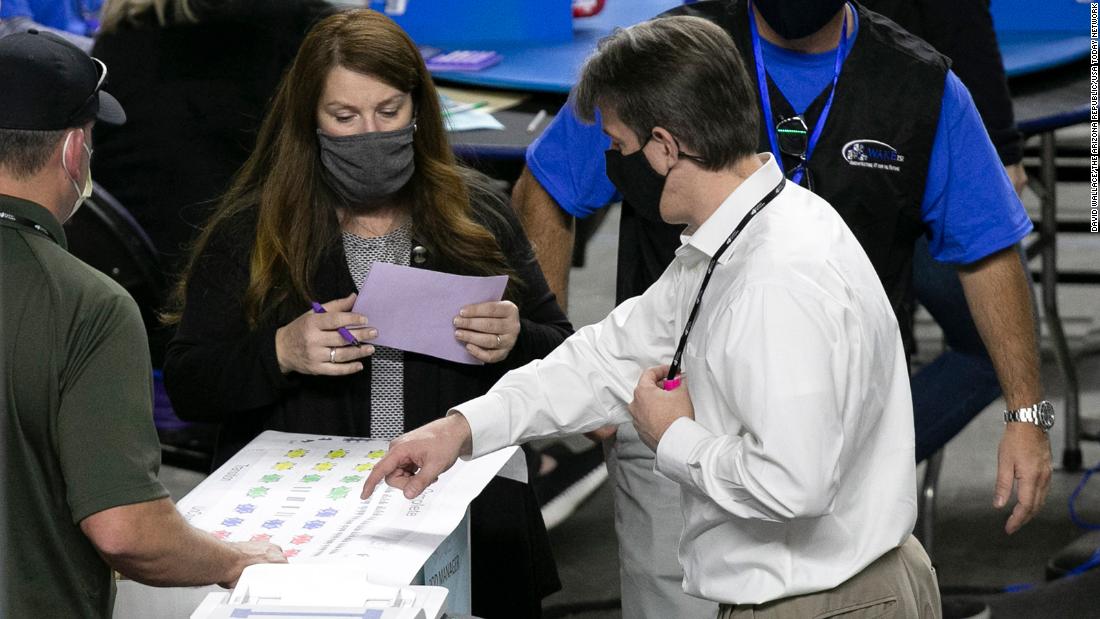
“We want elections to be secure and accessible,” state Sen. Bryan Hughes, one of the lead sponsors of the legislation, told the Texas Tribune.
But here’s the thing: This is a solution in search of a problem.
Because no matter what Hughes or former President Donald Trump say, there is zero evidence of widespread voter fraud in modern American elections. Like, none.
Let’s start with the 2020 election, the one that Trump has repeatedly worked to undermine by insisting that it was fraudulent.
Here’s Trump administration Attorney General Bill Barr late last year: “To date, we have not seen fraud on a scale that could have effected a different outcome in the election.”
The man who succeeded Barr in the job — acting Attorney General Jeffrey Rosen — said the same in testimony to Congress in May: “During my tenure, DOJ maintained the position publicly announced previously that the Department had been presented with no evidence of widespread voter fraud at a scale sufficient to change the outcome of the 2020 election.”
Trump and his legal team filed dozens of cases — in state and federal courts — alleging widespread voter fraud. They won not a single significant victory. The Supreme Court rejected a suit to overturn the Pennsylvania results and a broader effort led by Texas Attorney General Ken Paxton that aimed to invalidate votes in several key swing states that went for Biden.
Recounts and audits in a variety of states affirmed the original results. There is just no “there” there.
And 2020 isn’t an anomaly!
Consider the following:
* According to one database of all types of election fraud, there have been 491 cases of reported absentee-ballot fraud since 2000, which is an absolutely paltry number when you consider the number of elections and number of ballots cast over that time.
* A study done by Loyola Law School professor Justin Levitt tracked US elections from 2000 to 2014 in search of voter fraud, or, as he put it, “specific, credible allegation that someone may have pretended to be someone else at the polls.” Levitt found 31 examples of fraud out of more than 1 billion instances.
* A five-year study on voter fraud commissioned by President George W. Bush found, as The New York Times wrote at the time, “virtually no evidence of any organized effort to skew federal elections.”
* In the 2016 presidential election, there were a total of four documented cases of voter fraud out of more than 135 million votes cast, according to The Washington Post’s Philip Bump.
Against all of that evidence and data is, well, not much other than Trump’s wild accusations and the occasional anecdotal story about how some guy voted twice for Trump.
There’s an important point to be made here: An isolated incident of someone voting twice (or trying to) is NOT widespread voter fraud. It is one person acting irresponsibly. What is being alleged by Trump and his backers is that there was a plot across multiple states to steal the election, dumping tens of thousands of votes in at the last minute to hand the election to Joe Biden. And there is simply no evidence of that happening. None. (Side note: You would think that if the plot was as widespread as Trump is alleging, some word of it might have leaked out, right?)
So why are Republicans across the country — 14 states have passed almost two dozen laws aimed at restricting voting access — pushing so hard on this issue if it’s not to solve the nonexistent problem of widespread voter fraud?
The answer seems obvious: Balloting changes over the last decade or so — and, in particular, in response to the Covid-19 pandemic over the last 16 months — has produced massive voter turnout. In 2020, 67% of eligible voters reported voting, a 5% increase (17 million more votes) than four years previous. (The 2020 turnout was the highest in more than a century.)
And Republican leaders have acknowledged that more voters voting is bad for them. In 2019, Senate Republican Leader Mitch McConnell dismissed the idea of a making Election Day a holiday as a “power grab” by Democrats. In March 2020 Trump told Fox & Friends this: “They had levels of voting, that if you ever agreed to it you’d never have a Republican elected in this country again.”
So, yeah. When people tell you who they are and what they are doing believe them — the first time.



